
Human resilience
‘Sand and Stars’ continues Thierry Deleruyelle’s 20th century lineal celebration of the spirit of human resilience.
It first appeared with ‘Fraternity’ – a personal dedication to the unbreakable strength of communal will embodied by the people of the historic mining area of Courrieres in Northern France, which in 1906 suffered a catastrophic tragedy that claimed over 1000 lives.
‘No Man’s Land’ followed – a work equally imbedded in the tragic blood-soaked soil of the region.
It focussed on the figure of John McCrae, a doctor and writer who endured the horrors of the First World War amid the comradeship forged for eternity in battlefield sacrifice (himself included) and commemorated in his poem ‘In Flanders Fields’.
It first appeared with ‘Fraternity’ – a personal dedication to the unbreakable strength of communal will embodied by the people of the historic mining area of Courrieres in Northern France, which in 1906 suffered a catastrophic tragedy that claimed over 1000 lives.
Contrast
In contrast, in ’The Crazy Twenties’, Deleruyelle recalled Paris at the euphoric height of its post-war Art Deco optimism.
It evokes a cosmopolitan city revelling in Picasso and Chanel, F Scott Fitzgerald and Hemingway, Stravinsky and Josephine Baker – the trauma of conflict and loss substituted by exuberance and pleasure.
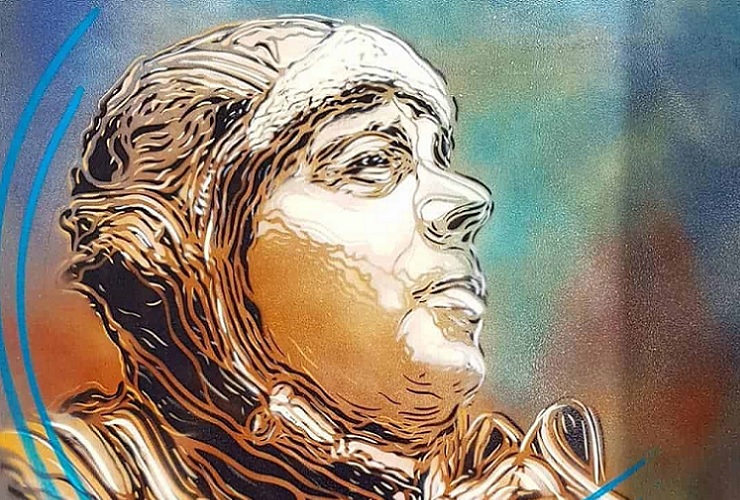
Aviator and novelist
‘Sand and Stars’ returns to an individual focus - and the aviator and novelist Antonie de Saint-Exupery (above), who in December 1935 set out to break the record for a flight from Paris to Saigon.
Nearly 20 hours into the attempt he, alongside navigator Andre Prevot, crashed into the sands of the Libyan desert, their outlook as bleak as the never-ending horizon before them.
Miraculously they survived for three days before close to death they encountered a Bedouin tribesman who led them to safety.
It in turn led to ‘The Little Prince’, a celebrated novella that also dealt with observations on what he called “important things” – and those that a critic said were ‘enmeshed in a search for ideals which he translated into fable and parable'.
Wind, sand and stars
Saint-Exupery later wrote the memoir, ‘Terre des hommes’ (‘Land of Men’). Although centred on the incident it was not an adventure story. Instead, it dealt with themes of friendship, death, heroism, camaraderie and humanity. The English title ‘Wind, Sand and Stars’ came later (below).
It in turn led to ‘The Little Prince’ (below), a celebrated novella that also dealt with observations on what he called “important things” – and those that a critic said were ‘enmeshed in a search for ideals which he translated into fable and parable'. It has since sold over 140 million copies.
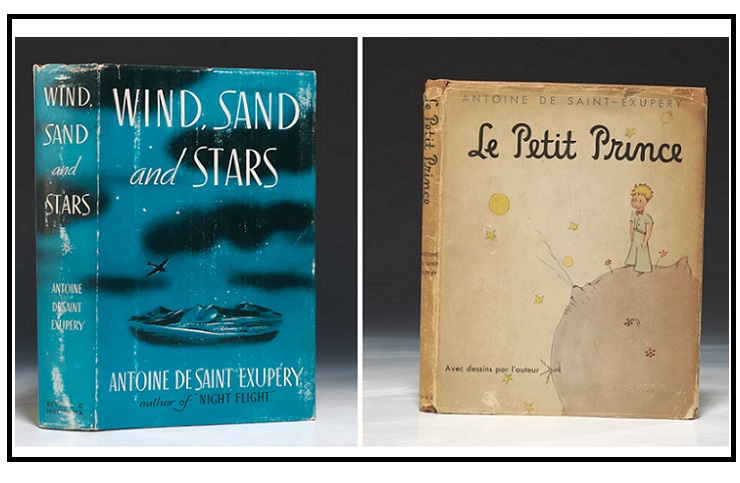
Legacy
A man obsessed with trying to understand the philosophy of true humanity, Saint-Exupery died in 1944 flying a reconnaissance mission for the Free French Airforce – his legacy as an aviator and writer securing him the honour of an inscription in the Pantheon in Paris.
For ‘Sand and Stars’ Thierry Deleruyelle has found in him a figure who encapsulates his own desire to celebrate the inherent goodness of individuals and communities in response to circumstances beyond their control.
His musical structure and methodology also mirrors that of the novella literary form (all four works are based on a series of short liner narrative chapters marked by time, place and character).
Structure and form
His musical structure and methodology also mirrors that of the novella literary form (all four works are based on a series of short liner narrative chapters marked by time, place and character).
In ‘Fraternity’ seven sections recall the fateful day; from early morning trek to communal grave, whilst in ‘No Man’s Land’, six chapters (based on a thematic motif) tell the story from Ontario 1914 to Poppy Day 1921.
Five descriptive mini essays make up ‘The Crazy Twenties’ from 1920 to 1925 (again based on a thematic motif), whilst the six linked sections that comprise ‘Sand and Stars’ – from the opening ‘Le Bourget, 1935’ to ‘Miraculous Rescue’ finale (all linked by five note theme) encapsulate the four-day story from take-off to rescue.

Clearly defined
Much like Saint-Exupery’s book, Deleruyelle’s composition is also hallmarked by a clearly defined style of writing.
There are no unexpected cheap trick theatrics written into the score, no marked choreography or ‘distant’ sound effects (although Treize Etoiles who premiered the work at the 2023 Europeans, did).
As brass band test-piece novellas go though it is substantive – and you wonder if the musical landscape can always support interest in places. Two bands an hour makes for a long day for listeners, let alone the judges.
His familiar structuring simply offers the stanchion points to support each section of a 19-minute or so composition with its stylistic and rhythmic identity – the narrative travel line, colourful and evocative, weaving in between.
Substantive
As brass band test-piece novellas go though it is substantive – and you wonder if the musical landscape can always support interest in places. Two bands an hour makes for a long day for listeners, let alone the judges.
It will take some playing though.
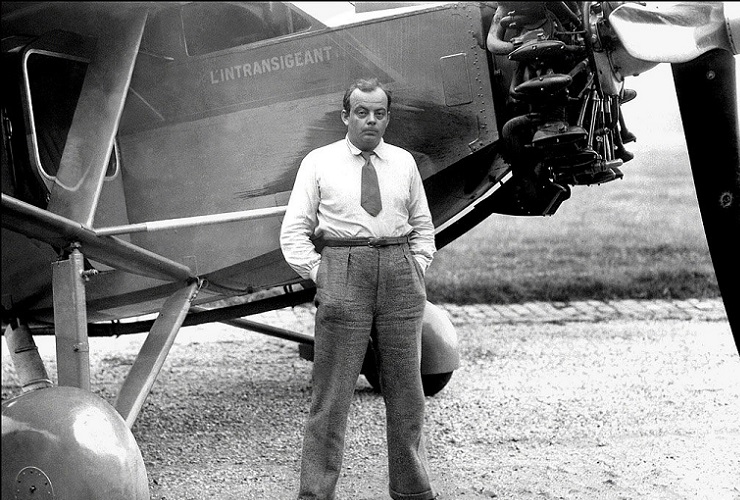
Arabic spirit
The airport opening ‘Le Bourget, 1935’ has a mysterious whiff of ‘Arabic spirit’, heralded by a meandering flugel horn that lies on top a textured low brass and percussion foundation (Deleruyelle excels with his percussion writing) that moves like soft sand below your feet.
Chocks away and it’s a quick-paced flight down to the Med and beyond (‘An Extraordinary Adventure’), which although a brisk 148-tempo mark isn’t quite jet-engine speed, and should give the troms (who are worked ferociously throughout) a chance to play with clarity amid the nimble detail and heady cocktail-mix of dynamics.
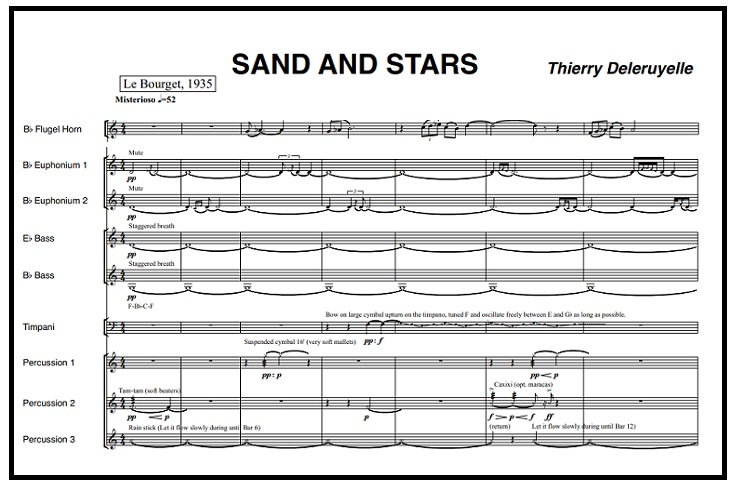
Composer note
It is worth noting though that the composer does give a very clear indication of his own thoughts on pace: “…the stated tempo must be followed meticulously, particularly in the slow passages, where it is not necessary to overly lengthen the notes. In the fast passages, any fluctuation should be avoided as it would detract from the dynamism of the section.”
The music needs no artificial stimulus - even if it does now and again stray into ‘Fry’s Turkish Delight’ territory.
Omar Sharif
Conductors taking their time emerging from a heat haze like Omar Sharif in ‘Lawrence of Arabia’ or racing away down the wing like Mo Salah being chased by Al Ittihad football agents should beware then. The music needs no artificial stimulus - even if it does now and again stray into ‘Fry’s Turkish Delight’ territory.
Just when all seems fine, the engine cuts out before spluttering back into life. The carbs on the troms go haywire, with ‘The Crash’ a whirring blur of slide action (marked 152), fire (see below) and a thumping nosedive into the dunes – leaving the propellor turning with the sound of a broken air-conditioning fan.
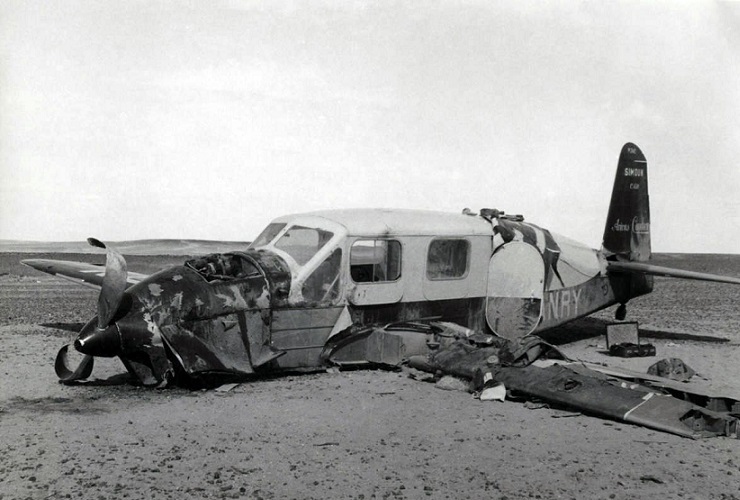
Laments
The segue ‘lament’ that follows is series of formalised overlapping cadenzas (not marked libero) for baritone, bass trombone, horn, Eb tuba, soprano, trombone and flugel, as if Saint-Exupery and his colleague forlornly scan the horizon increasingly losing hope in their plight.
Lost in direction as well as reality amid the treacherous majesty that lies between the ‘sand and stars’ (evoked by tuned percussion and demi-semi quavers underpinning) - a last plea of despair comes from the euphonium and solo cornet (perhaps aided by the occasional sop before they close things).
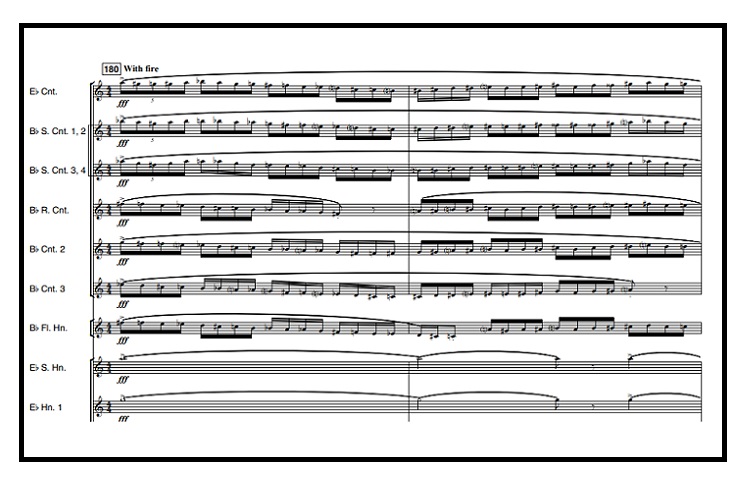
Belly dancer's navel
The Arabic influences soon seep ever more richly through the music. Fluid and as enticing as a wobbling ruby in a belly dancer’s navel (again with the troms leading the way) it evokes mind bending mirages of oasis hope and salvation as they trudge (surprisingly quickly though) through the endless sands.
you suspect the very best will be able to capture its colourful character and sense of human nobility without resorting to the modern day camouflage tricks of filmatic dynamic excess and CGI ‘special effects’ to mask the stern realities of the score.
With hope (and stamina perhaps beginning to wane in tired lips) ‘A Miraculous Rescue’ arrives with a camel riding Bedouin who rather quickly whisks them to safety (just 55 bars to the end).
Very best
It rounds off a work that will certainly extend all 18 competitors in full – although you suspect the very best will be able to capture its colourful character and sense of human nobility without resorting to the modern day camouflage tricks of filmatic dynamic excess and CGI ‘special effects’ to mask the stern realities of the score.
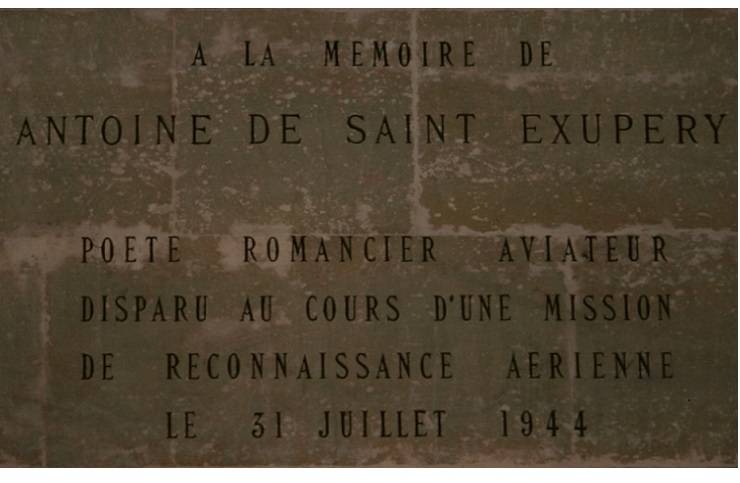
Ice Cold in Birmingham
Whoever comes out on top after this desert challenge though will thoroughly deserve their celebratory pints of beer at the bar – much like John Mills in the classic British film ‘Ice Cold in Alex’ (which incidentally had a an equally evocative score written by Leighton Lucas, a former conductor at Black Dyke).
He still has the 1940s to 1990s to consider for further explorations – from Nazi occupation and De Gaulle’s Fifth Republic to May 1968 civil unrest and France winning the 1998 World Cup.
And as for Thierry Deleruyelle?
He still has the 1940s to 1990s to consider for further explorations – from Nazi occupation and De Gaulle’s Fifth Republic to May 1968 civil unrest and France winning the 1998 World Cup.
We wait to see what musical tales of resilience they could possibly inspire in him.
Iwan Fox













